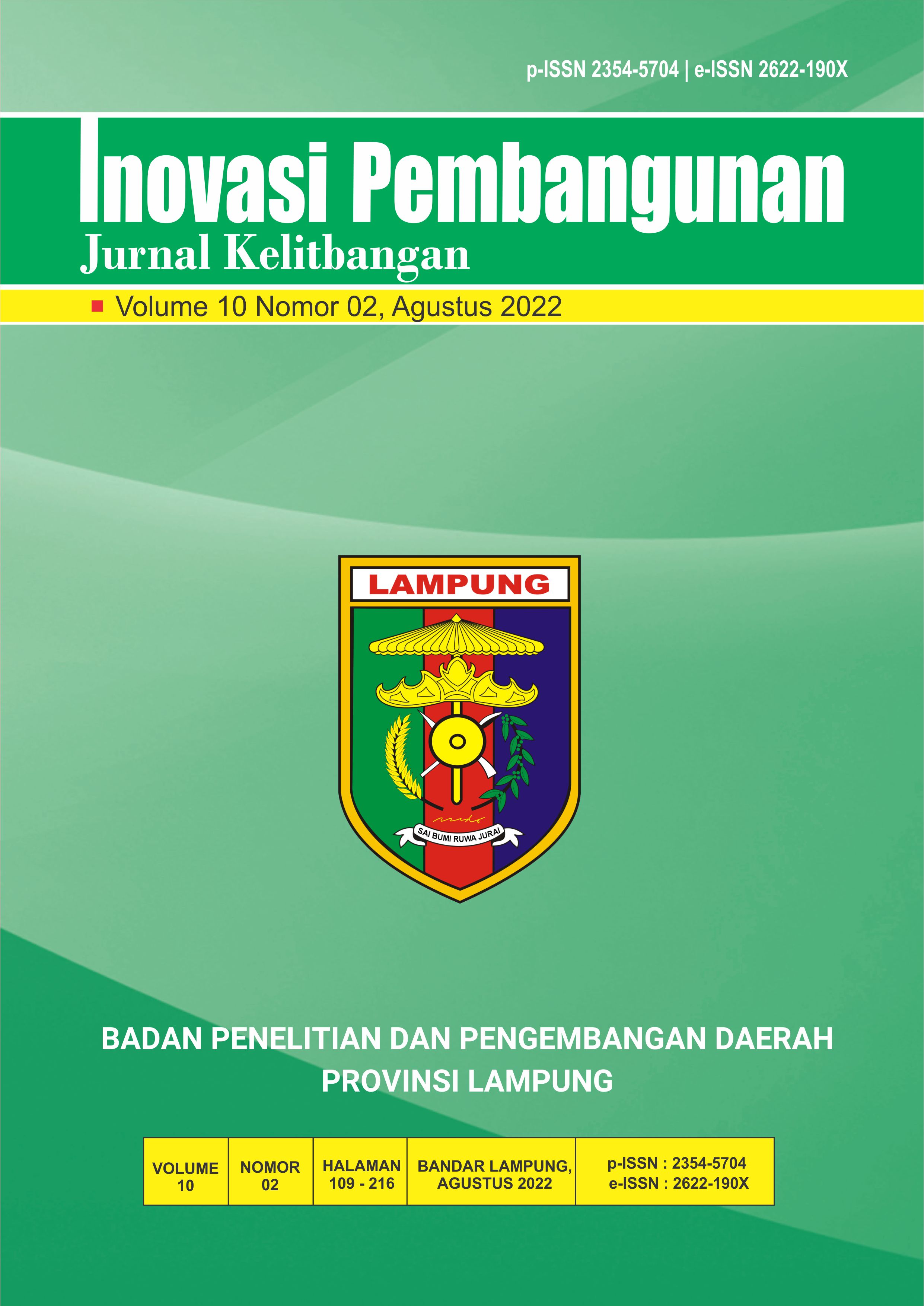POTENSI BERKEMBANGNYA INOVASI PEMBANGUNAN DAERAH BERDASARKAN AKTIVITAS PENELITIAN PERGURUAN TINGGI DI KABUPATEN PRINGSEWU
DOI:
https://doi.org/10.35450/jip.v10i02.300Keywords:
Local Development, Regional Innovation, Research and Higher EducationAbstract
Decentralization policies provide regional authorities the ability to manage their potentials and problems independently. The unequal geographical, social and economic conditions are challenges for every local government in solving problems and developing their own potential. In responding to these challenges, innovations that are practical and appropriately relevant to directly solve the problems in the region are needed. Innovations are generated through a series of scientific studies or research. In its implementation, the process of generating innovation can be designed systematically, known as RIS (Regional Innovation System). Research activity is one of the components carried out by academics in providing input for practitioners and the government in producing innovations. This research discusses how research activities were carried out in Pringsewu Regency to giude local stakeholders to promote innovations in their development and managerial approaches. The identification process is carried out by mapping various research that have been published in the last 5 years, to understand the direction of regional development through research activities. The linkage can be justified as a potential framework of innovation in Pringsewu Regency. Research activities in Pringsewu Regency, according to the identification process, are dominantly carried out in the health, education and agriculture sectors. This focus is in line with the development direction of Pringsewu Regency which is oriented towards the local economy and the quality of human resources. The overall findings suggest that the research focus in health, education and agriculture emerged as the fundamental elements of local innovations in Pringsewu’s development
Downloads
References
Cooke, P. (2002). Regional Innovation Systems and Regional Competitiveness. Innovation and Social Learning, 177–203. https://doi.org/10.1057/9781403907301_9
Cooke, P., Asheim, B., Boschma, R., Martin, R., Schwartz, D., & Tödtling, F. (2011). Handbook of regional innovation and growth. In Handbook of Regional Innovation and Growth. https://doi.org/10.4337/9780857931504
Doloreux, D., & Parto, S. (2005). Regional innovation systems: Current discourse and unresolved issues. Technology in Society, 27(2), 133–153. https://doi.org/10.1016/j.techsoc.2005.01.002
Komninaki, D. (2015). Regional innovation systems in peripheral regions: Insights from western Greece. Regional Studies, Regional Science, 2(1), 332–340. https://doi.org/10.1080/21681376.2015.1039568
Rozikin, M., Hesty, W., & Sulikah, S. (2020). Kolaborasi dan E-Literacy: Kunci Keberhasilan Inovasi E-Government Pemerintah Daerah. Jurnal Borneo Administrator, 16(1), 61–80. https://doi.org/10.24258/jba.v16i1.603
Schiuma, G., & Lerro, A. (2008). Knowledge-based capital in building regional innovation capacity. Journal of Knowledge Management, 12(5), 121–136. https://doi.org/10.1108/13673270810902984
Sofianto, A. (2019). Inovasi Manajemen Pemerintahan Berbasis Aplikasi Digital di Provinsi Jawa Tengah. Matra Pembaruan, 3(2), 99–108. https://doi.org/10.21787/mp.3.2.2019.99-108
Wang, H., Yang, G., & Qin, J. (2020). City centrality, migrants and green inovation efficiency: Evidence from 106 cities in the yangtze river economic belt of China. International Journal of Environmental Research and Public Health, 17(2). https://doi.org/10.3390/ijerph17020652
Yu, J., & Jackson, R. (2011). Regional Innovation Clusters: A Critical Review. Growth and Change, 42(2), 111–124. https://doi.org/10.1111/j.1468-2257.2011.00546.x
Published
How to Cite
Issue
Section
The Authors submitting a manuscript do so on the understanding that if accepted for publication, copyright of the article shell be assigned to Development Innovation: Jurnal Kelitbangan (JIP) , Balitbangda Provinsi Lampung as publisher of the journal.
Copyright encompasses exclusive rights to reproduce and deliver the article in all form and media, including reprints, photographs, microfilms and any other similar reproductions, as well as translations, the reproduction of any part of this journal, its storeage in databases and its transmission by any form or media. such as electronic, electrostatic and mechanical copies, photocopies, recordings, magnetic media, etc.


















